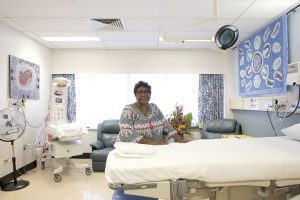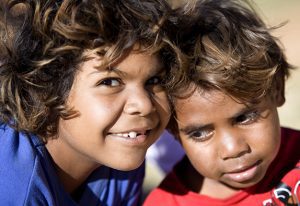
Tomorrow the South Western Sydney Local Health District (SWSLHD) will launch its strategy to support the Aboriginal community to improve access to health services as well as employment.
Coming on the eve of the annual NAIDOC activities, the 2017-2021 Aboriginal Health Plan and the 2017-2020 Aboriginal Workforce Strategy addresses the disparities in health care and job opportunities that exist for Aboriginal and Torres Strait Islander people.
District director of Aboriginal health Nathan Jones says both plans outline key priority areas and strategies to ensure that Aboriginal communities have access to comprehensive health services.
“The plan aims to close the gap and work in partnership with Aboriginal communities to ensure equitable access to employment, health care and treatment outcomes at our hospitals and services,” Mr Jones said.
“Aboriginal women are three times more likely to be hospitalised for dialysis and Aboriginal men are more than two times more likely to receive dialysis than non-Aboriginal people.
“We also know that Aboriginal men are five times as likely to be hospitalised for endocrine diseases,” he said.
To help meet the health needs of our Aboriginal communities, Mr Jones said the District has a range of culturally specific services and programs that support Aboriginal people.
Some of the programs include chronic disease, child and maternal health, drug and alcohol, sexual health, health promotion, youth health, mental health and support services.
[social_quote duplicate=”no” align=”default”]“The smoking rate in pregnancy for Aboriginal women in south western Sydney has decreased from 48 per cent in 2011 to 36.3 per cent in 2015, however we would like to see it decrease even further,” Mr Jones said.[/social_quote]
“Today the rate of Aboriginal children fully immunised at 12 months is almost on par with that of non-Aboriginal children. The rate of Aboriginal children fully immunised at the age of five is equal with non-Aboriginal children and sits at 94 per cent,” he said.

The new Aboriginal Workforce Strategy is part of the District’s commitment to develop culturally safe workplaces and providing career opportunities for Aboriginal people.
“The more Aboriginal people we have working in our facilities, the more we will see Aboriginal people attending services to address their health concerns,” says acting Aboriginal workforce manager Tania Bonham.
“Our Aboriginal workforce has grown over the last six years from 0.39 percent in March 2011 to 1.95 percent in July 2016. The goal for the District is not only to meet the 2.6 percent NSW Health target but to surpass it.
“It is important that Aboriginal employees have opportunities to carve a career path within NSW Health so they can progress and build on their skills and experiences by carrying out challenging and meaningful work,” Ms Bonham said.



